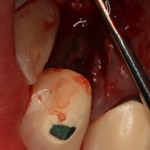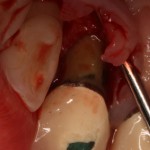What is gum disease and what causes it?
Our understanding of the etiology and pathogenesis of gum disease and conditions is continually changing with increased scientific knowledge. Periodontitis (gum disease) is defined as “an inflammatory disease of the supporting tissues of the teeth caused by specific microorganisms or groups of specific microorganisms, resulting in progressive destruction of the periodontal ligament and alveolar bone with pocket formation, recession, or both.” Chronic periodontitis (gum disease) is the most common form of periodontitis, and is most prevalent in adults but can be observed in children. It is associated with the accumulation of plaque and calculus and generally has a slow to moderate rate of disease progression, but periods of more rapid destruction may be observed.
How does bacterial plaque and calculus cause bone loss?
Dental plaque is defined clinically as a structured, resilient, yellow-grayish substance that adheres tenaciously to the intraoral hard surfaces. Plaque is primarily composed of bacteria in a matrix of salivary glycoproteins and extracellular polysaccharides. Calculus is a hard deposit that forms by mineralization of dental plaque, and it is generally covered by a layer of unmineralized plaque. The process of bone and tissue destruction results from the interaction of bacteria or bacterial substances with host cells, which directly or indirectly lead to degradation of the periodontal tissues. Simply said, the pathogenesis of periodontal destruction (gum disease) involves a complex interplay between bacterial pathogens and the host tissue.
Why is surgery required?
Surgical treatment is vital to eliminate or reverse the pathologic changes in the gum tissue, create a maintainable environment, and to promote periodontal regeneration. Surgical treatment objectives include
1.) Increase accessibility to the root surface, making it possible to remove all irritants.
2.) Reduce or eliminate pocket depth, making it possible for the patient to maintain the root surfaces free of bacterial plaque.
3.) Reshape soft and hard tissues to attain a harmonious topography.
- Root surface with bacterial plaque and calculus
- Cleaned root surface without bacterial plaque or calculus





 by
by 


